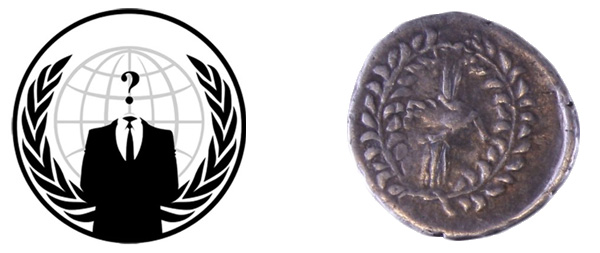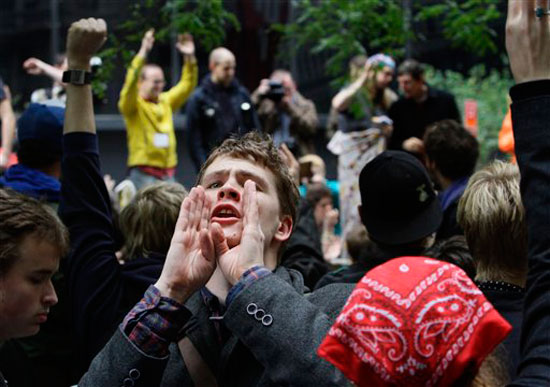Revolutionary Convergences: History and Symbolism in Anonymous and OWS Art
 Sunday, January 29, 2012 at 09:40PM
Sunday, January 29, 2012 at 09:40PM By Jason Huff
[Originally published by Rhizome, November 22, 2011]

Left: Anonymous logo, Right: Greek coin from 271-191 BC
[EXCERPT]:
Anonymous operates under a well-designed logo. Does it belie their dispersed identity or siphon power from historical symbols to disrupt our own associations to them? The aesthetics of past revolutionary movements point more toward the second possibility. We see this link to history in the poster designs of Occupy Wall Street—new digital tools under visual constraints produce an early 20th century screen printer's aesthetic with formal motifs of the same era.
New technology and historical technique are converging, and so are the symbols being used to deliver the message. The visual traces of current aesthetics draw on the deep roots of history and the powerful associations images and symbols therefore possess, allowing us to make quick associations to the power of the Roman Empire or the strength of the Greek Gods all in a glance at a tiny logo. Turning back to Anonymous—What can we learn by systematically decoding their symbolism? And how do their aesthetics relate to their actions as international and anonymous activists?
Searching for these convergences online often reveals infinite Platonic shades of nearly identical images. But occasionally, if you sift past the first helping of results, you can uncover some remarkable connections.
 admin |
admin |  Post a Comment |
Post a Comment |  ANONYMOUS,
ANONYMOUS,  JASON HUFF,
JASON HUFF,  OWS,
OWS,  RHIZOME in
RHIZOME in  GRAPHICS,
GRAPHICS,  HISTORY,
HISTORY,  SYMBOLS,
SYMBOLS,  representation
representation 